Hezbollah “cannot fight the corrupts in our country” with weapons, “but it can besiege, rein in and punish them,” Mohammed Raad , Hezbollah parliamentary bloc chief , said on Friday as he campaigned for the upcoming election in the southern town of Arnoun
“We’re the guarantee for protecting this country and its security and stability, and our concern has been and will always to protect Lebanon against what harms our people,” Raad claimed
“Yes there is corruption in the state and we want to press on with the reform process, but the method of confronting corruption in the state is different from the method of confronting the enemy that is threatening us with weapons,” he added and went on to say
“Hezbollah cannot fight the corrupts in our country (with weapons), but it can besiege, rein in and punish them.”
“Corruption in Lebanon hides behind a lot of covers and it is rampant and deeply-rooted,” Raad said , adding that “corruption in Lebanon is confessionally distributed and those who own more media outlets have a bigger ability to incite and accuse others of their own deeds.”
“Corruption in our country is not Shiite, Sunni or Maronite. Corruption has no sect, but the corrupts are the ones who hide behind their sects,” Raad went on to say.
Commenting on Raad’s remarks , Ali Hussein a prominent Lebanese political analyst branded Raad’s claims as ” a joke”
“Hezbollah is the main reason we still have corrupt politicians in Lebanon”, the analyst said adding if Hezbollah stops protecting these politicians they would not be around anymore.
Look what happened to the October revolution, which aimed at overthrowing the corrupt political elite , he said adding, ” the only party that killed that revolution was Hezbollah and its ally the Amal Movement .
The October 17 Protests, commonly referred to as the October 17th Revolution is a series of civil protests taking place in Lebanon. These national protests were triggered by planned taxes on VoIP applications such as WhatsApp, quickly expanded into a country-wide condemnation of sectarian rule, the stagnation of the economy, unemployment (which reached 46% in 2018), endemic corruption in the public sector,legislation that was perceived to shield the ruling class from accountability (such as banking secrecy) and failures of the government to provide basic services such as electricity, water, and sanitation.
The traditional stronghold of Shiite parties Hezbollah and Amal Movement, protesters rose up in unprecedented defiance of their sectarian leaders. In the southern cities of Tyre and Nabatieh, protesters marched and led chants against both Hezbollah and Amal in addition to tearing down signs and banners of both parties’ members of Parliament. These extraordinary expressions of dissent would have been unthinkable before the uprising . To the north, in Sunni-dominated Tripoli, people chanted their solidarity with protesters in Tyre and Nabatieh; burned Hezbollah flags; and led chants against the political elite from Nasrallah to current PM Najib Mikati, who hails from Tripoli .
Hezbollah and Amal in particular were eager to paint the demonstrations as being orchestrated by foreign interests. In an hour-long speech on Oct. 25, Hezbollah’s leader, Hassan Nasrallah, played up fears of foreign interference, warning that “[w]e are worried for the country that someone is trying to pull it … toward a civil war.” In a widely shared video, dozens of Lebanese rejected the idea of foreign funding, recording themselves saying “I am Lebanese, and I am funding the revolution.” Nasrallah also urged his supporters not to participate in the protests. Hezbollah members have also blocked the entrances and exits from Dahiyeh, a stronghold for the party in southern Beirut, to prevent residents from joining the protests in downtown Beirut. Although some of Hezbollah’s base have responded by closing ranks, many others have persisted in turning out to protest.
Tensions spiked Nov. 12, after President Aoun , a close ally of Hezbollah told protesters to go home or risk “catastrophe” for Lebanon. He also refused to accept calls for a technocratic government, insisting that any new government be composed of at least half politicians. Protests resumed with force, calling for a secular transitional government composed of technocrats. During these protests, a soldier shot and killed a demonstrator, the first direct casualty in four weeks of demonstrations
Lebanese security forces responded to peaceful protesters with excessive force and unlawful detentions. In Beirut, riot police used tear gas to disperse protesters on the evening of Oct. 18; at least 64 people were hospitalized because of tear gas inhalation. Military police also used batons, rocks and their boots to beat and kick protesters. Internal Security Forces arrested at least 70 people for “acts of vandalism and looting in downtown Beirut.” Human rights lawyer Ghida Frangieh confirmed that detainees had been beaten by security forces at both the point of arrest and en route to the police station; all 70 detainees were later released after confirmation that the protesters’ arrests had been unlawful.
Fist set on fire
The six-metre-high fist which had the word “revolution” written on it in Arabic, went up in flames on Friday November 22, 2019 as Lebanon marked Lebanon’s 76th Independence Day
The fist, which had become a symbol of the protests, was erected in the square in the first days of the uprising,
Early on Friday, a man on a motorbike fled the scene after throwing a petrol bomb at the fist, Lebanese media reported. His identity and motives we unknown.
Scores of Hezbollah and Amal supporters went on a rampage in Martyrs’ Square on October 29, attacking protesters and their tents, while also attempting to set fire to the fist, but were unsuccessful.
Woke up to this…
— Romy?? (@romytweeting) November 22, 2019
Thugs burned the statue fist towering above Riad el-Solh Square with the word "Revolution" written on it.
It means that They fear us and fear another independence.
#IndependenceDay pic.twitter.com/O0zzkTyR3w
“I just woke up to these images and video circulating, the sad part is the thugs who were forced to do this,” Carmen Geha, an activist and scholar, said on Twitter.
Supporters of Shiite groups Hezbollah and Amal attacked the peaceful demonstrators on several occasions since the widespread protest movement first began in October.
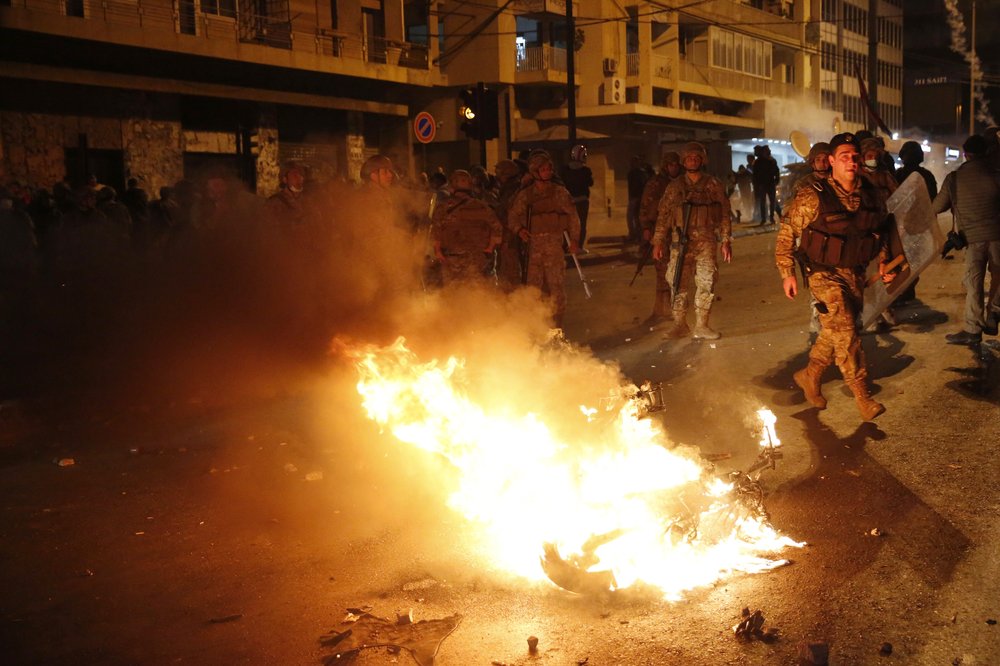
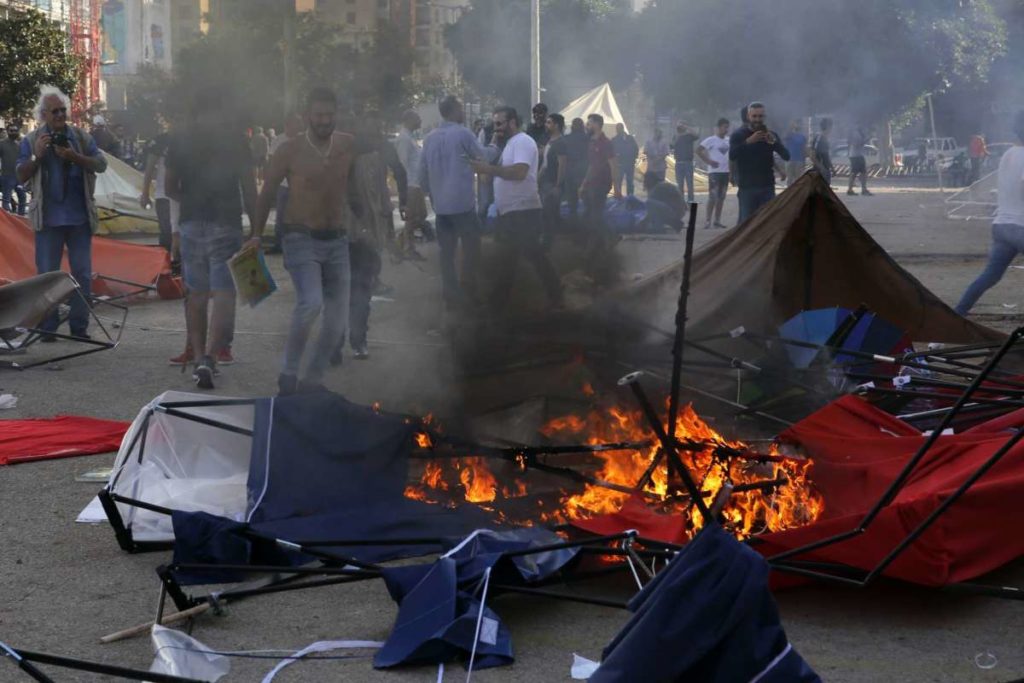
Nizar Hassan , one of the organizers of the October revolution summarized the aims of the revolution :
We want a government that is independent from the political parties and independent from the ruling class, the bankers and real estate speculators and people who have been benefitting from the economic system for the last 30 years. We want people who are independent experts to oversee a transition period in which early elections are held, the economic crisis is dealt with and where steps towards cracking down on corruption are taken.
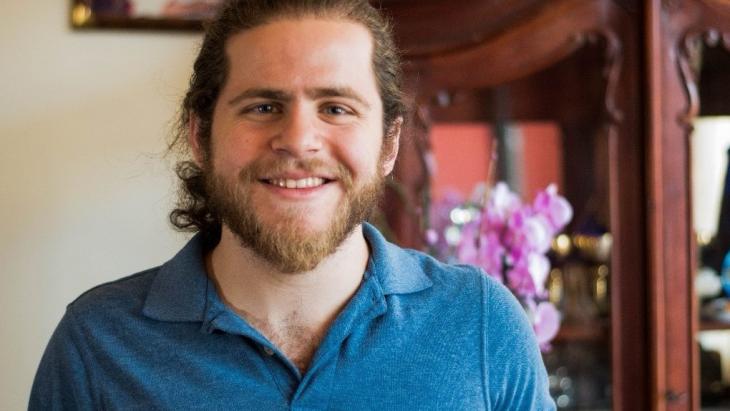
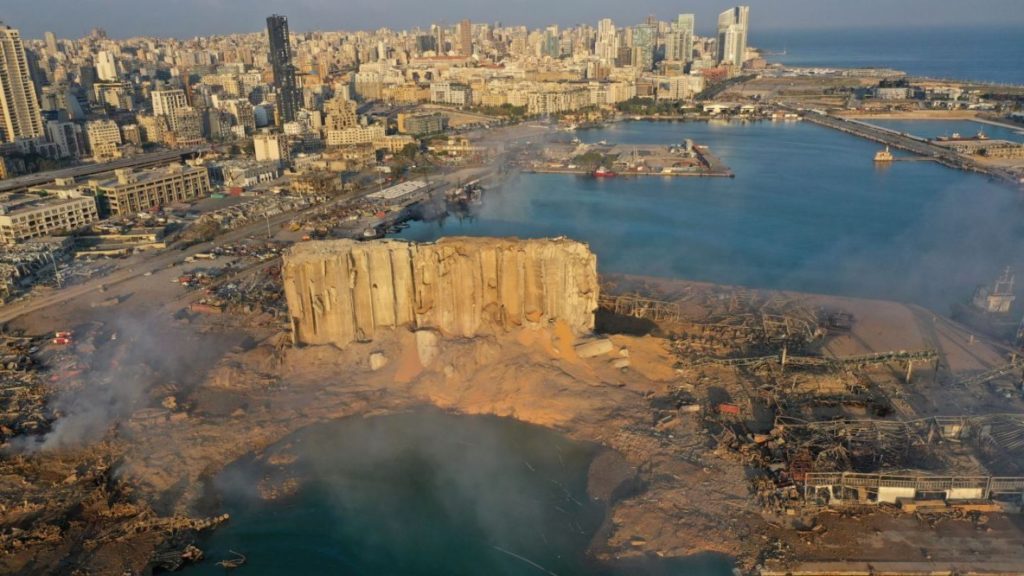
The protests created a political crisis in Lebanon that prompted Prime Minister Saad Hariri resignation echoing protesters’ demands for a government of independent specialists. A cabinet headed by Hassan Diab was formed in 2020, but also resigned after the 2020 Beirut explosion, which killed 218, wounded over 7000, left 300, 000 homeless when large section of Beirut was destroyed . 2750 tons of Ammonium nitrate that was illegally stored at the Beirut Port caused the explosion .
Lebanese Forces leader Samir Geagea slammed Hezbollah election campaign
Geagea criticized Hezbollah’s electoral campaign slogan “we’ll keep protecting and building,” saying that no one has asked them to protect and that they are rather “putting the Lebanese in danger every given moment.”
“The state and the army are the ones who should protect, it is not your job to protect,” Geagea told Hezbollah
He added that Hezbollah had enjoyed a parliamentary majority in the four past years. “What have they built,” he asked. “The Lebanese have lived the worst tragedy in history during the past four years.”

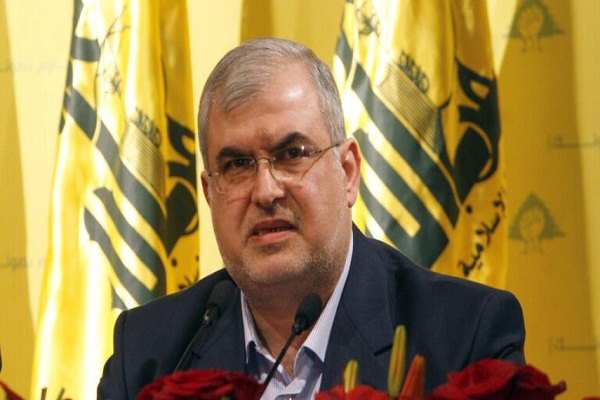
Leave a Reply
You must be logged in to post a comment.